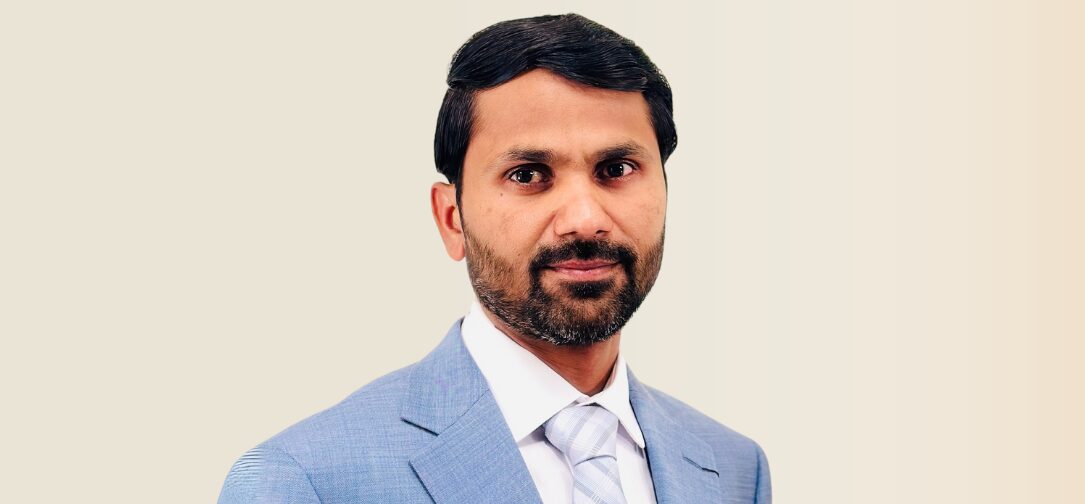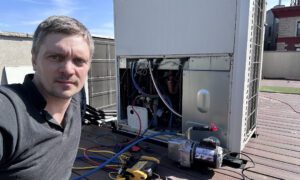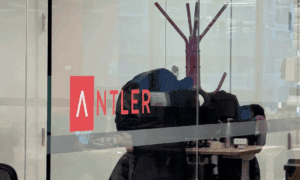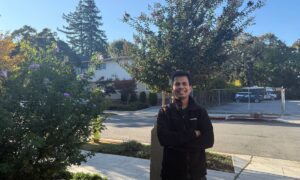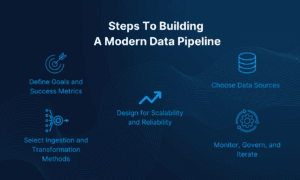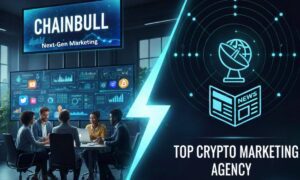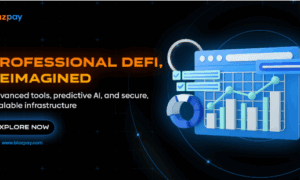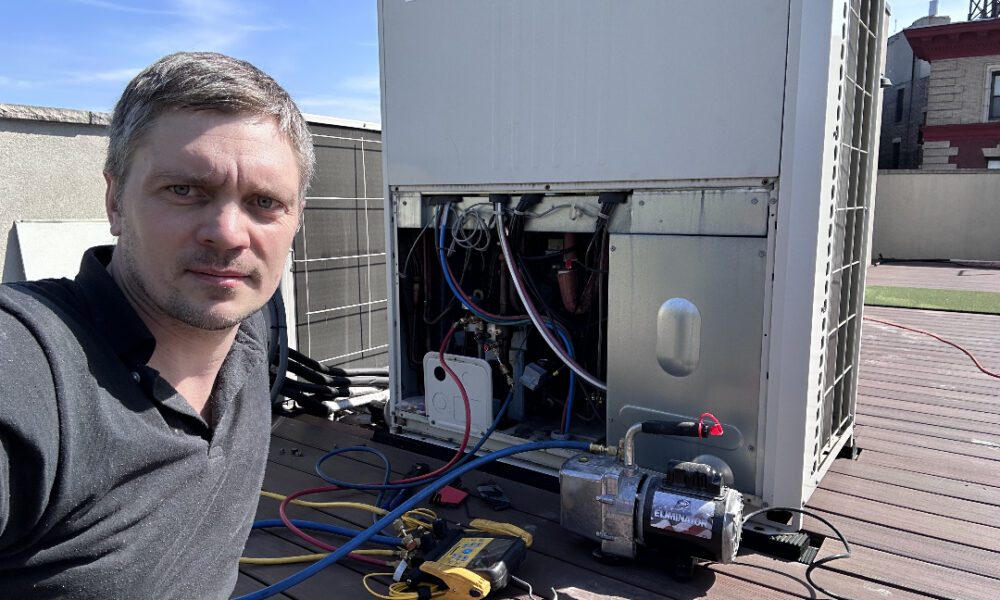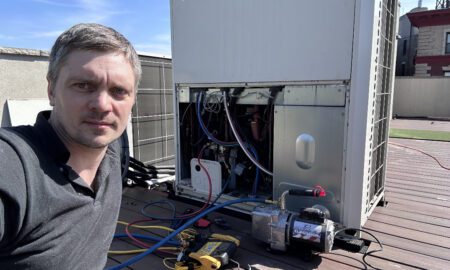Sachin Suryawanshi is a software architect at Harbinger Systems, Inc., a global technology company specializing in software engineering services, where he applies his extensive experience in designing scalable, secure, and high-performance cloud-native solutions to leading complex initiatives across a spectrum of use cases spanning cloud and cybersecurity, system optimization, enterprise transformation, and cloud cost management.
Recognized for his expertise in cloud architecture and technology leadership for more than 15+ years, Sachin has deployed his highly specialized technical acumen to overseeing innovative projects focused on Azure migration, architecture design, DevOps, analytics, application security, enterprise cloud strategy, SOC 2 compliance, cost optimization, and performance improvements. He is particularly noted for his extraordinary success in architectural innovation that has helped diverse organizations achieve multimillion-dollar savings through his customized approach to cost-effective solution design. Blending his unique understanding of cloud economics with a relentless dedication to cost optimization, Sachin leads technology and cross-functional teams in cost reviews, environment audits, re-engineering efforts, and developing platform strategies that drastically reduce operational overhead without compromising on scalability, reliability, or security.
Sachin is a well-respected thought leader who contributes to advancing the industry by sharing his original methodologies to help other organizations optimize their cloud expenses. In addition to publishing technical articles, he is also deeply committed to mentoring engineering teams and assisting young software professionals and engineering students in their educational growth and career development. Among his volunteer activities, Sachin is proud to serve as a judge for national and state/local award programs including the Globee® Awards for Technology, Brandon Hall Group™ Excellence in Technology Awards, Business Intelligence Group Awards (BIG Innovation), Future City® Competition, and Delaware Valley Science Fairs (DVSF)—one of the oldest and largest science fairs in the United States.
Personally, Sachin has been honored with 21 awards, including 14 individual and 7 team recognitions, reflecting his consistent excellence in technical leadership, innovation, collaboration, and impact. He earned a Master in Computer Management (MCM) degree from Pune University, where he resided and worked with private technology companies until relocating to Pennsylvania (US) for his current employer.
Complementing his expert proficiency in various languages, frameworks, databases, architectures, performance optimization tools, cloud computing services, and Agile Software Development, he holds certifications in Azure AI Fundamentals (AI-900) and Azure Fundamentals (AZ-900).
We spoke with Sachin about his solutions for system and cost optimization, and his strategies for developing innovative strategies and designing architectures that consistently achieves outstanding operational and financial outcomes.
ELLEN WARREN: Sachin, let’s start with your background. What led you to pursue a career in software architecture and advance your education with an MCM degree? And how did you then develop your strong focus on cost optimization?
SACHIN SURYAWANSHI: My journey into IT started during my college days, when I realized how powerful technology could be in solving real-world problems. I taught myself several programming languages early on, which gave me the confidence to pursue a Master in Computer Management. I could see that the future belonged to technology. I wasn’t just interested in learning how systems worked; I wanted to understand how to build smarter, more efficient ones. Over the years, as I worked closely with enterprise customers, one challenge became very clear: cloud adoption was rising fast, but so were the costs. I saw organizations struggle with managing their cloud expenses due to a lack of strategic planning. That’s when I began focusing heavily on cost optimization as a core part of software architecture. Using my experience with Azure, I started designing intelligent cloud solutions that could scale without driving up costs. I developed internal tools to cut testing time, applied proven cloud design patterns, and aligned every technical decision with the customer’s business goals. This forward-thinking approach has helped companies save millions, and it’s exactly the kind of value I believe modern architecture should deliver.
EW: Your redesign of a mission-critical workload saved one organization $250,000 annually—a big win that will yield millions of dollars in savings over time. Can you walk us through your approach to identifying cost inefficiencies, and how you decide when to introduce serverless or other modern cloud patterns without sacrificing performance?
SS: I strongly believe that cost optimization is not just about saving money—it’s about building smart systems that support long-term growth and stability. Many companies invest heavily in the cloud without realizing how fast the costs can grow if not managed carefully. This is why I always encourage technical leaders to make cost a key part of every architectural decision. A well-designed system should not only scale and perform well, it should also stay within budget as the business evolves. In one of my recent projects, I noticed that we were spending a large amount every month on Azure Cache for Redis. After evaluating the actual needs of the application, I redesigned the solution and replaced Redis with Memcache, which met our requirements and significantly lowered our monthly bill. I also keep track of Azure’s new service plans. When Microsoft introduced more cost-effective app service tiers, I quickly evaluated and shifted several workloads to the new plans, which further reduced infrastructure costs. In another case, I discovered that some non-production environments were running continuously, even though they were not in use all the time. I worked closely with our directors, CTOs, and build engineers to change this setup and move those environments to on-demand provisioning. That small change resulted in thousands of dollars saved every month. I regularly monitor resource usage, scale down underutilized services, and remove any secondary components that are no longer needed. In one of the bulk email systems we were designing, the original plan was to use Azure Service Bus. However, after researching various options, I found that Azure Message Queue was a more cost-effective solution that still met our needs. By applying this design pattern, we were able to save thousands of dollars each month without sacrificing performance or reliability.
Apart from architecture work, I also assist with vendor negotiations to help our clients secure better deals. I supported our cloud team in purchasing reserved instances at the right time, which helped cut long-term expenses. These combined efforts saved one of our clients millions of dollars, and reflect my ongoing commitment to designing efficient, cost-aware, and business-aligned cloud solutions.
EW: In another successful project, you led an enterprise migration to Azure with zero post-migration issues, which is extremely rare. What principles or practices do you rely on to de-risk such large-scale migrations, especially when legacy systems are involved?
SS: This was one of the most complex and high-stakes migrations I have led in my career. I was responsible for leading a large team of over 30 professionals, and I served as the Architect overseeing all technical decisions. My responsibilities included building the migration plan, creating detailed architecture diagrams, and designing a highly reliable multi-region setup with an active-active failover strategy to ensure zero downtime. I also worked directly with the customer, led planning sessions, performed proofs of concept, and focused on risk mitigation, compliance, and infrastructure creation. Throughout the project, I collaborated closely with development teams, project managers, technical leads, DBAs, QA, automation engineers, performance testers, build engineers, and the infrastructure team. I guided every team at each phase of the migration to ensure smooth coordination and execution. I also performed deep analysis of various Azure cloud services, comparing them to find the most secure, scalable, and cost-effective options. Based on those evaluations, I implemented the right set of Azure services to support the business goals. This project involved migrating thousands of applications and databases from Rackspace to Azure. It was the largest migration I have ever led, and I approached it with careful planning, strong leadership, and in-depth technical expertise. Every challenge had a solution, and my hands-on involvement ensured that the migration was executed with zero failures. The client’s entire business was running on those systems, and the fact that we completed the entire migration without a single post-migration issue remains one of the proudest achievements of my career. Handling such a large and critical project required discipline, technical depth, and strong coordination, and I’m proud to have delivered it successfully.
EW: Your numerous project accomplishments include a major optimization milestone, achieved by improving page load times from five seconds to 1.5 seconds over a year—this is a significant feat. How do you balance the pressure for quick wins with the need for deep, sustainable optimization in complex systems?
SS: When systems start slowing down, it affects not just performance, but also the overall user experience and business growth. I believe that improving performance should be part of long-term architecture planning, especially for enterprise applications that handle high traffic. In one of my key projects, I worked with a client whose application had a page load time of 4 to 6 seconds. The CTO asked me to take full ownership of the performance improvement and lead the effort end-to-end. At that time, some of our top clients, including a few million-dollar accounts, had raised serious concerns about performance issues. There was even a risk that they would not renew their annual contracts. This created a sense of urgency, and our CTO decided it was a top priority to fix these problems quickly and permanently. I was brought in to lead this critical initiative. I began by reviewing the full system, including the application code, database, APIs, and infrastructure. I created two plans: one for short-term improvements to show early results, and another for deeper, long-term optimization. I worked on this project for almost a year and led all technical activities. I introduced clean coding practices, optimized database queries, improved backend workflows, and closely collaborated with QA and performance testing teams to make sure everything worked as expected. By the end of the project, I had reduced the page load time to just 1.5 seconds. This achievement brought clear business value and earned appreciation from both the client and senior leadership. The success came from strong technical expertise, attention to detail, and a commitment to solving problems completely. It is a strong example of how the right architecture and leadership can turn performance challenges into long-term success.
EW: In a different application, you cut build times from 60 minutes to five minutes—a 92% improvement. What did that reengineering process involve, and how do you approach CI/CD design so that it serves as a business accelerator rather than a bottleneck?
SS: I was working with one of our enterprise clients where the entire build and deployment process was taking close to 50 to 60 minutes. This delay was more than inconvenient — it was directly impacting their SLA because they had to take the application offline during each deployment. That kind of downtime was affecting their business operations and customer experience. I started by analyzing their full CI/CD pipeline. I worked closely with the build engineers, reviewed every step in the pipeline, looked at custom scripts, and identified the main bottlenecks. A lot of the process was outdated, and several areas hadn’t been optimized in years. I spent months working with the team, step by step, improving the setup. I proposed new ideas and introduced custom scripts that weren’t originally part of their system. We cleaned up the pipelines, automated more steps, and restructured the build process to remove unnecessary delays. After nearly a year of focused effort, we brought the deployment time down to just 5 minutes. This was a big shift. Now, instead of waiting nearly an hour, we can deploy multiple applications in just a few minutes. It has improved agility, reduced risk, and helped the business meet its SLAs without stress. This outcome didn’t come from just using new tools — it came from understanding the system deeply and finding smart, practical ways to improve it.
EW: One of your early innovations—a DevOps database deployment utility—is still in use eight years later. What lessons can today’s engineers learn about building tools that are resilient and future-proof?
SS: Years ago, I developed a database build and deployment utility that is still being used today. I didn’t create it for just one specific project. I designed it with all the essential features that any development or DevOps team would need. It’s flexible and easy to integrate. You can use it with any application, plug it into a CI/CD pipeline, or run it from a local machine. The utility shows real-time deployment status, takes automatic backups of existing scripts, and allows easy rollback if needed. It also shares a detailed summary with the team once the deployment is complete. I built it with the future in mind. My goal was to create something that would last and keep adding value, even as tools and systems changed. What makes me proud is that the utility still works perfectly, as if it was built recently. It continues to save time, reduce errors, and simplify deployment across teams.
Over the years, I have built about eight similar utilities for one of our customers. All of them are still in use today and save hours of effort every single day. The key lesson here is that engineers should not only focus on day-to-day development. We must also think about what can help the team in the long run. Creating small, thoughtful tools can have a huge impact. When we build solutions that reduce manual work, speed up development, and improve testing efficiency, we create real value that lasts.
EW: In your article, “AI as the Architect’s Muse,” you discuss AI’s role in redefining design. How do you see AI evolving the role of architects in software design—and where do you draw the line between automation and judgment?
SS: In my article I explored how AI is starting to influence the way we think about software architecture. I don’t see AI as something that will replace architects. Instead, I see it as a tool that can enhance the role by giving us faster insights, helping us explore more design options, and making complex analysis more manageable.
That said, I believe there’s a clear boundary between what AI can do and what it should do. AI is great at handling repetitive tasks, running simulations, or even suggesting certain patterns based on data. But architecture goes far beyond that. It’s about understanding the business context, anticipating change, making thoughtful trade-offs, and designing for long-term success. These decisions need human judgment, experience, and often, a strong understanding of people and priorities—not just code.
To me, AI should support the architect, not replace the thinking behind the decisions. It can speed things up and reduce manual effort, but the final choices, especially when it comes to things like scalability, security, and user experience, still need to be made by someone who understands the bigger picture.
EW: With your work on DevSecOps and AI, how do you see security paradigms shifting? What strategies can teams adopt now to stay ahead of increasingly intelligent threats without slowing development velocity?
SS: Security can no longer be treated as an afterthought. As cyber threats grow smarter and start using AI, teams must integrate security into every stage of development and cloud operations. To stay ahead, teams should shift security left. This means using tools like Static Application Security Testing (SAST) to catch coding issues early, Dynamic Application Security Testing (DAST) to detect runtime vulnerabilities, and Software Composition Analysis (SCA) to flag risks in open-source libraries.
Security should also be built into the CI/CD pipeline. Automated checks that block deployments when high-risk issues are found help catch problems early and speed up feedback to developers.
In the cloud, teams should adopt Cloud Security Posture Management (CSPM) to validate configurations and ensure compliance. They should also use Cloud Workload Protection (CWP) to monitor workloads like VMs, containers, and serverless apps in real time.
Most importantly, security should be a shared responsibility. When developers, testers, and operations teams all play a role and have the right tools and guidance, security becomes a natural part of the process. By combining early testing, automation, real-time monitoring, and team collaboration, companies can stay secure while maintaining development speed.
EW: In your upcoming article on Azure messaging costs, you hint at design patterns that reduce cloud spend. What are some of the most common mistakes companies make in cloud cost architecture, and how do you address them in your audits?
SS: In the article, I talk about how smart design patterns like the Claim Check Pattern can help reduce unnecessary cloud expenses. But messaging is just one part of a bigger picture. Many companies make costly mistakes across their entire Azure architecture.
One of the most common issues I see is sending large payloads directly through messaging services like Azure Service Bus or Event Grid. This leads to higher costs and performance issues. That’s why I recommend patterns like Claim Check, where only a reference to the payload is sent through the message, and the actual data is stored in blob storage — a much cheaper option.
Beyond messaging, many teams overuse premium SKUs, keep always-on services running without auto-scaling, or create too many individual resources without consolidation. For example, I often find multiple app services, databases, or storage accounts running at low utilization when they could be pooled or scaled down.
Another big mistake is ignoring outbound data transfer costs, especially when services are placed across different regions without a clear reason. This often results in hidden charges that add up quickly.
When I do architecture audits, I go beyond just reviewing usage. I focus on identifying design decisions that directly affect cost — like redundant deployments, oversized infrastructure, unused features, or lack of caching. I work with teams to simplify their design, choose the right service tiers, reduce data movement across regions, and apply patterns that minimize waste while improving performance.
EW: You’ve mentored engineering teams and judged science and tech awards from Globee to FutureCity. How has mentorship influenced your leadership style, and what advice do you give young engineers navigating today’s cloud-native ecosystem?
SS: Mentoring engineering teams and serving as a judge for respected awards like the Edison Awards, Globee, Brandon Hall Group, Intelligence, FutureCity and the Delaware Valley Science Fair has significantly influenced my leadership style. These experiences taught me that impactful leadership is less about giving orders and more about empowering others to grow, think independently, and solve problems with confidence.
Through mentorship, I’ve learned to focus on long-term development rather than quick fixes. I encourage engineers to ask questions, challenge assumptions, and think critically about architecture, performance, security, and cost. I guide them toward seeing the broader picture, where technical decisions directly affect business outcomes.
For young engineers entering today’s cloud-native ecosystem, my first advice is to master the fundamentals. Understanding how cloud platforms work, how services scale, and how billing models affect design choices is far more valuable than chasing every new tool. A strong foundation enables smart decision-making.
I also recommend adopting AI tools early. AI can assist in writing cleaner code, reviewing pull requests, debugging, and even learning new technologies faster. Used wisely, AI accelerates growth without replacing human judgment. It’s a powerful tool that can boost productivity and help engineers focus on creative, high-value tasks.
Above all, I tell them to stay curious, stay adaptable, and never stop learning. Technology will keep evolving, but those who build strong thinking habits and take ownership of their learning journey will always stay ahead.

